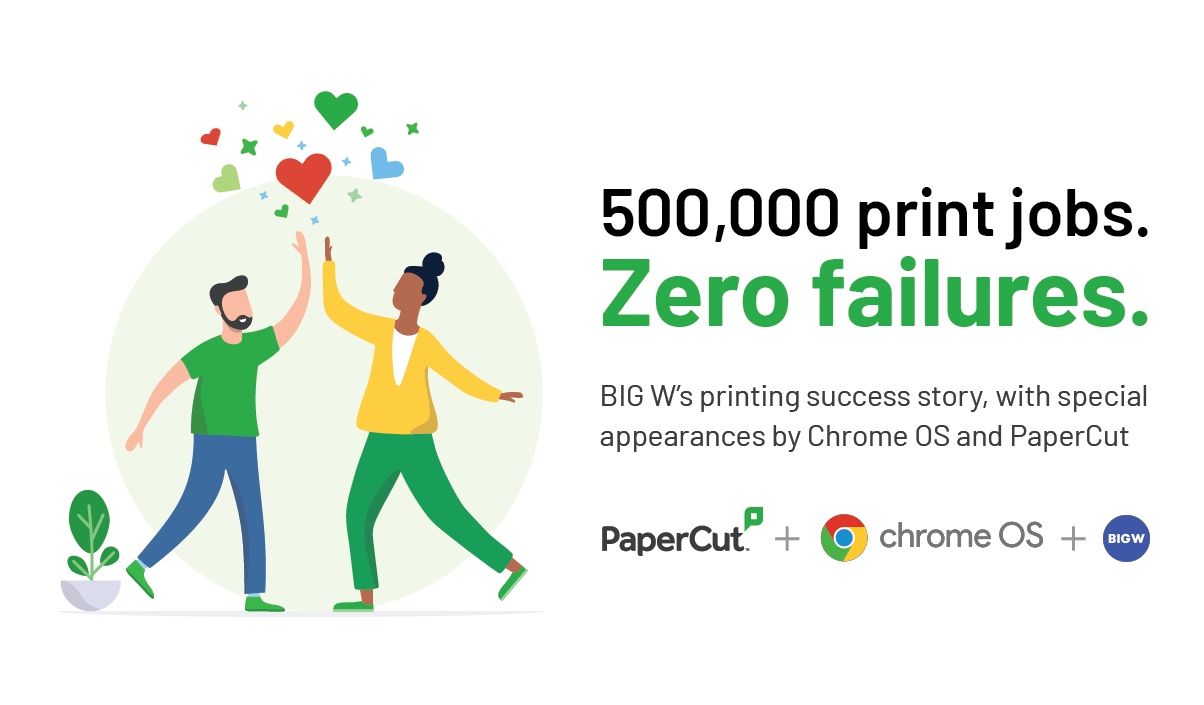Printing plays a critical role in an enterprise.
You’d be hard pressed to find an enterprise that has achieved the “paperless office” title. Printing enables the creation of hard copies – invoices, contracts, reports, and presentations.
While digital documents do dominate the modern working world, printing is still an essential tool for distributing physical records to clients, partners, and employees. With all that printing, comes a whole lot of hardware and software to manage it all.
Enterprise-level print environments typically involve high-volume, high-speed printers that can handle the demands of large organizations. These printers often have features such as automatic duplexing, stapling, and collating to streamline the printing process and save time.
Since 2020, remote and hybrid work has become the norm, and as a result, many enterprise businesses have adopted cloud-based printing solutions to allow employees to print from anywhere, on any device, while maintaining security and control over sensitive documents.
Cloud printing also replaces some on-premises hardware like print servers with print management software hosted in the cloud. This begs the question, is enterprise printing entering a new future thanks to cloud printing?
What is cloud printing?
Let’s define cloud printing, because there’s some dual meaning at play.
Cloud printing allows users to print from any device, anywhere, at any time, using the internet. The process involves sending a print job to a cloud-based print server, which sends the document to the printer.
This service eliminates the need for a direct connection between the printer and the user’s device, making it a flexible and convenient tool for enabling printing. The user doesn’t need to be in the same physical location as the printer. Nor do they need to install specific printer drivers or software.
User beware, however, because cloud printing is sometimes confused with cloud print management. This is when print management software is hosted in either a private or public cloud environment.
Most cloud print management solutions provide cloud printing functionality, but they also provide a suite of tracking, reporting, and management tools for the administration and management of print environments from a centralized console accessed in the cloud.
Read more about the differences between cloud print and cloud print management .
Benefits of cloud printing for enterprise businesses
Enterprise businesses are increasingly moving their printing operations to the cloud in order to streamline workflows, reduce costs, and improve efficiency for end-users and system administrators.
Cloud printing functionality offers a range of benefits for end-users They can print from anywhere, on any device, without the need for complex IT infrastructure or software installations.
This enables remote workers to access printers and print documents as easily as if they were in the office, reducing the need for physical document transfers or email attachments.
When it comes to IT staff, that’s where cloud-based print management comes in. It offers centralized management tools for IT administrators to monitor and control printing activity, set permissions and access levels, and enforce security policies. This can help to reduce waste, optimize resource utilization, and improve document security.
For business owners, cloud-based printing solutions for enablement and management can also offer cost savings. Their enterprise no longer needs to invest in expensive on-premises printing infrastructure like additional print servers. Nor do they need to hands-on manage the maintenance and support of their printers. Patches and upgrades all come with the cloud package.
Overall, the move to cloud-based printing for enterprise businesses is driven by the need for flexibility, efficiency, and cost-effectiveness in the modern business landscape.

Future of enterprise printing with cloud print
The cloud is changing the future of enterprise printing by offering new levels of flexibility, scalability, and security to organizations of all sizes. Printing has always been closely tied to hardware. You needed to lease a fleet of multi-function printers.
Enterprise organizations with dozens of printers and copiers needed print servers to enable and manage printing. With the rise of cloud services for all other computing resources, printing has also been transforming with the advent of the cloud. Primarily, it means organizations can manage their printing without paying for and maintaining additional hardware like print servers.
But that’s just what’s happening now. Cloud-based printing solutions offer the potential for enhanced security features. This includes document encryption and user authentication, to protect sensitive information and prevent unauthorized access.
As more businesses move their printing operations to the cloud, we can expect to see increased innovation in the printing industry, as well as new opportunities for businesses to optimize their workflows and reduce costs. Overall, the cloud is transforming enterprise printing by making it more accessible, efficient, and secure than ever before.
Challenges of cloud print for enterprise printing
Cloud printing continues to rise and rise in popularity for a variety of industries and organizations. Everybody likes to increase efficiency and save money. We’re talking about business, after all.
However, cloud printing shouldn’t be seen as some one-size-fits-all mega solution for all print environments. Like all things, there are advantages and disadvantages. With enterprise companies in mind, it’s important to be aware of potential limitations if you’re considering adopting the technology.
For organizations with high security and compliance standards, there are security breach and data leak concerns. Cloud means your data talks to the internet, and there are reservations about transferring sensitive information over the internet.
This is a legitimate concern, but mainly for public cloud SaaS (Software-as-a-Service) products. Private cloud deployments of software mean you leverage the best of both worlds - the accessibility of the cloud but the high-security standards of on-premises.
However, the private cloud requires constant IT expertise which means you’re still responsible for maintenance, etcetera. But there is more than one way to print with the cloud if that’s where you want to print.

Another consideration is cost. Sure, a cloud-based subscription would mean you reduce capital expenditure and supplement it with operational expenditure. However, depending whereabouts you are on your current hardware lease, cloud migration could be a costly transition up-front.
And while the gross cost could be more affordable than a hardware lease for a print server, switching to a subscription-based pricing model can impact your finance’s monthly budgeting.
Lastly, and this is the biggest one, some printer brands may need to be compatible with cloud printing and cloud print management software. So when searching for a cloud-based print management software, ensure you check the compatibility of the solution with your current print fleet.
This includes integrations with any other administration or management systems you use inside your organization.
While cloud printing and cloud print management offer many benefits, it’s important you weigh the potential limitations against the benefits you seek. But that’s the same with any technology, it’s about what suits your organization.
Best practices for enterprise cloud printing
Cloud printing can be an effective solution for enterprise printing needs, but it requires careful planning and execution to ensure a successful implementation.
One of the best practices for implementing cloud-based print enablement and management solutions is to start with a thorough assessment of your organization’s current print environment and needs. This includes understanding the types of documents that must be printed, the number of users who require access, and the security requirements for sensitive data.
Another important tip is to select a cloud print solution that aligns with your organization’s goals and objectives. This may involve evaluating different providers, considering features such as print tracking, and ensuring compatibility with existing printers and software.
It is also essential to establish clear guidelines and policies for users, such as restricting access to certain printers or setting printing quotas to manage costs.
Ongoing monitoring and evaluation of the cloud print solution can help identify areas for improvement and ensure that the system continues to meet your organization’s needs. And the number one tip is to demo and trial any solution before you lock in.
This gives you the opportunity to see how it integrates into your workplace before making a decision.
Enterprise cloud printing case studies

If you’re outside of Australia, you may not have heard of BIG W, but they’re a big retail chain. Like, Walmart big. BIG W needed a new printing solution to replace Google Cloud Print and reduce potential points of failure for their 176 stores.
Google Cloud Print was a key cloud printing tool for many organizations, and when it was discontinued, many businesses needed an alternative solution to enable printing inside and outside the local network.
BIG W had a Chromebook environment and was using Google Cloud Print. Google actually recommended our product, PaperCut Mobility Print, which supported cloud printing with its feature named, well, Cloud Print.
The solution integrated perfectly with BIG W’s existing print environment and was scaled to suit all 176 of their stores. The rollout had no interruption to business and the migration recorded an immediate 95% reduction in operational incidents. Across their entire enterprise of 20,000 users, they printed 500,000 jobs with zero failures.
Read more about BIG W’s printing success story .
The next generation of enterprise printing
The move to cloud printing has boldly taken enterprise businesses where no printing solution has gone before. Businesses are exploring new frontiers and discovering new ways to work, collaborate, and succeed.
Harness the power of technology to print from anywhere, on any device. Unlock new levels of efficiency and productivity so that your crew can navigate uncharted territories. Set your printers to stun, your sights on the stars, and reach for the skies with a cloud print solution.




